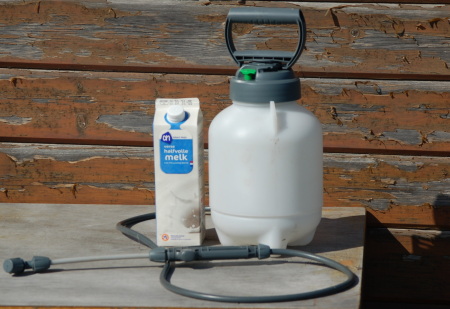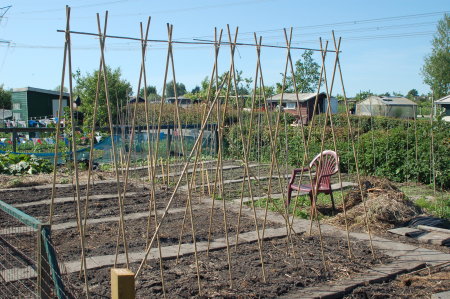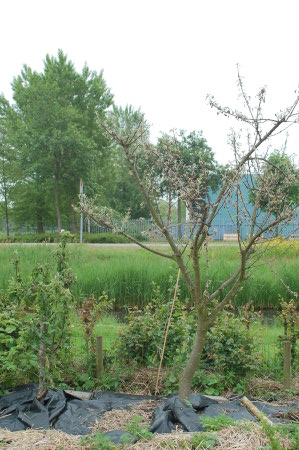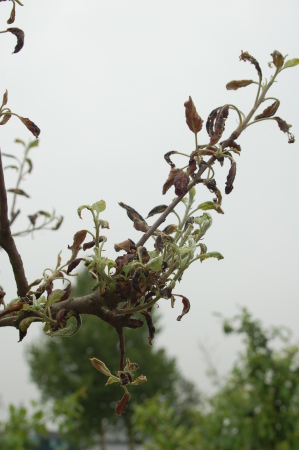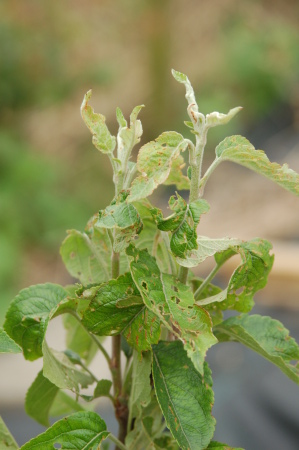Steph and I went to the Amsterdam Pure Markt (website in Dutch) today. I have only recently ever heard of it, it’s all the way on the other side of the city from us and it’s only held once a month, so it’s not going to be a regular thing for us to do. A number of stands had home made looking sausages hanging up like this one:
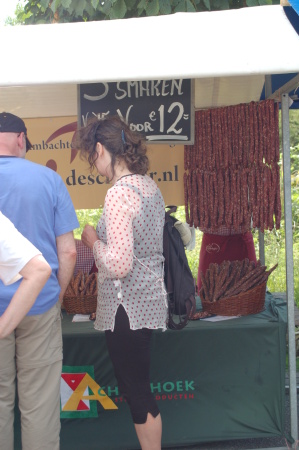
The stated goals of the market organizers are:
- Delicious Eating and Drinking
- In Season and Local Products
- Handmade with Quality
- Creativity
- Environmentally Sustainable
- Healthy
There were several cheese stands, like this one that appeared to be selling cheese from their own farm.

Lots of food was available, mostly in the form of small inexpensive snacks. Some of the stands selling delicatessen products were happy to sell them on a paper plate with a plastic fork for no extra cost.
A local microbrewery was selling ‘samples’ of their beer for €1 per glass. Wine was also available per glass, together with many other non-alcoholic drinks. Most of the stands seemed to be offering free samples of their products.
This board is offering crepes, sweet on top and savory on the bottom. It says the savory ones are made with buckwheat flour.
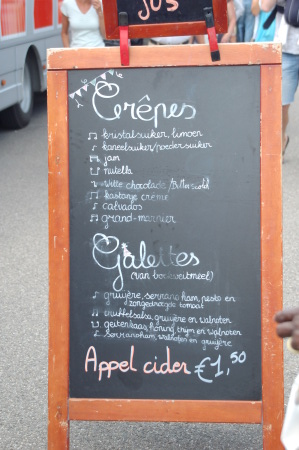
While a lot of the products were very regional, there were also a number of farmers who came from farther away, like this Italian looking guy selling organic Sicilian olive oil for €10 per wine bottle full.
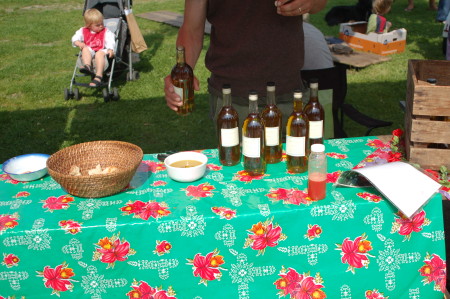
This market may be the only place you will ever see Dutch wine for sale, like this stand below:
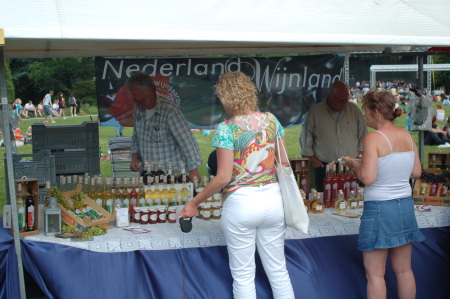
This stand sold smoked garlic and related products:
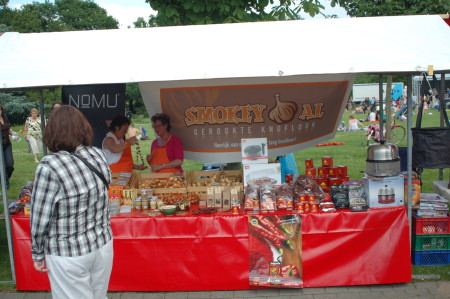
This stand wasn’t clearly labelled, so I can’t say anything about it for sure, but it appeared to be one of a number of stands that were selling products that came from a single farm or farming cooperative. In this case what they were selling looked like it came from Spain:
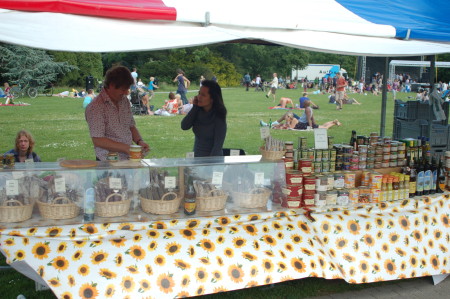
This stand was selling home made mustard products (and by the looks of it pickles too):
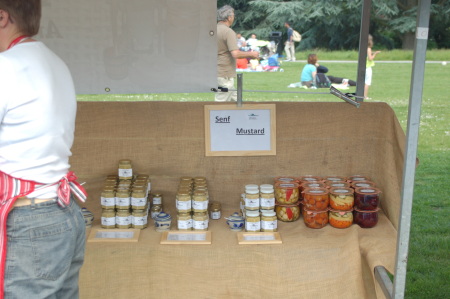
For 2009 this market is only the last Sunday of each month, up to and including October, from 11:00-18:00 (11am to 6pm). It’s not a difficult walk from the Amstel train station in Amsterdam, but taking bus 15 for a few stops, or maybe a taxi, is probably a little easier. Tram 9 from Amsterdam Centraal Station is also a good choice. It’s just about in the dead center of Park Frankendael, and if you walk be sure to have a good map with you as the streets are a little complicated in that area. Try using Google Maps to search on ‘Pure Markt Amsterdam Netherlands’.
If you’re a tourist coming to Amsterdam, looking for local food products, I think it’s a great place to come. For some reason their website is not in English, in fact they don’t seem to be doing a lot of promotion at all, so it’s probably mostly unknown to most tourists. It wasn’t very crowded like our local food market can be, and the surrounding park can be a nice place to spend the rest of the day after a visit to the market.


